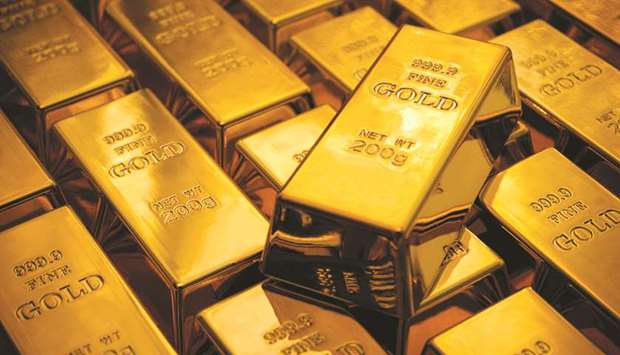Slowing global growth, a weaker US dollar and a drive by central banks to expand the amount of gold they hold could be a winning trifecta for investors seeking a recovery in the metal’s price after its first annual loss in three years.
Central Banks are expected to acquire an additional 600 metric tonnes this year, according to the consulting firm Metals Focus Ltd. The buys, which will help the banks diversify their foreign-exchange assets in a time of extraordinary political volatility, signal a growing confidence in the metal’s value moving forward.
The banks “were not net buyers even a decade ago,” said Juan Carlos Artigas, director of investment research at the World Gold Council, in a telephone interview.
“As their foreign reserves expand, they are increasingly diversifying away from pure dollar exposure.” The dollar gained strength last year as the Federal Reserve boosted US interest rates on four occasions, undercutting gold’s appeal.
This year, though, the Fed has dropped its previous language calling for “further gradual increases” at a time when the world’s economic equilibrium is being shaken by sanctions, trade wars and Brexit.
Russia, facing US sanctions, became the biggest central bank buyer in 2018, adding 274.3 tonnes, according to the WGC.
Meanwhile China, locked into a stubborn trade war with the US, added just under 10 tonnes in December alone.
Buyers, including the banks, are “utilising gold as a way to hedge increasing risks,” Artigas said. In total, central banks now own about 17% of the world’s gold, or about 33,230 metric tonnes, according to the WGC.
“Central bank demand alone” can nudge prices upward, said Jeff Currie, global head of commodities research at Goldman Sachs Group Inc, in a Bloomberg TV interview. “Our target is $1,450’’ an ounce.
Spot bullion rose as much as 0.9% to $1,323.43 an ounce on Wednesday, the highest since May. Gold is up 2.9% this year and is heading for a fourth straight monthly gain, while a gauge of the dollar is down for a third month.
The pent-up buying comes as economics increasingly are expressing concern over slowing international production. The International Monetary Fund in January cut global growth to 3.5% this year, the slowest in three years and beneath the 3.7% expected in October, noting trade tensions are adding to rising risks.
Global trade has slowed, while the world’s debt is near a record $244tn, three times the size of the global economy. The IMF is warning governments to rein in borrowing and guard against future risks.
Meanwhile, “the fact that the US dollar might have peaked could be a significant driver,” Axel Merk, manager of the $149.35mn VanEck Merk Gold Trust said in an e-mail.
“I wouldn’t be surprised that in the context of the greenback’s run-up in recent years, the voices to diversify have not only increased, but now have gotten traction.”
To be sure, not everyone is convinced that the acquisition of gold by central banks will be the major driver for the price of gold. Stephen Land, a money manager at Franklin Templeton Investments, said he still sees demand for gold jewellery, bars, coins and physical gold-backed Exchange Traded Funds serving in that role.
Investors slowed purchases of gold-backed ETFs last year, but the assets surged by more than 100 metric tons from October through year-end on broader market volatility. Demand for gold bars and coins rose 4% in 2018, while jewellery demand was steady, according to the World Gold Council.
“Additional news of official sector buying “can drive investors aggressively into even more long gold positions,” said Bart Melek, head of commodity strategy at TD Securities in Toronto, in a Jan. 17 note. “This would go a long way to move prices significantly above forecasts.”

Slowing global growth, a weaker US dollar and a drive by central banks to expand the amount of gold they hold could be a winning trifecta for investors seeking a recovery in the yellow metal’s price after its first annual loss in three years
